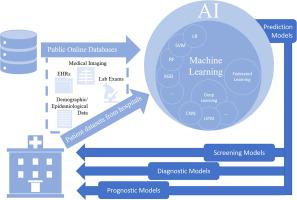Industrialisation will re-shape the construction workforce
Done well, this shift will bring new skills and responsibilities for the existing workforce, while attracting a new, diverse generation of talent in a competitive market. However, successful change management will require strong leadership and an open, creative approach to obtain the buy-in of staff, work councils, unions and shareholders.
Managing change
While the impact of new technologies and innovative approaches is already being felt by the construction industry, projects simply would not be completed without physical outdoor labour. The move to modular and manufacturing methods will be massive for this still very traditional industry with, in some cases, enormous changes to terms and conditions of employment and significant re-training required.
The more significant these changes, the more urgent the need for buy-in from workforce representatives. A move away from site-based to factory-based work will require employees to accept new ways of working and new shift patterns, and to adopt new skills. This change is likely to have one of the most disruptive and important impacts on the infrastructure’s workforce in decades. Trade unions are likely to be resistant to restructuring exercises involving redundancy, or substantial changes to job roles and terms and conditions.
In the UK, for example, the main trade unions representing those in the construction industry - Unite, the GMB and the RMT - have historically been reluctant to agree with employers any substantial move away from the existing sector-related collective agreements. Around a decade ago, seven major construction firms proposed replacing the traditional trade-based agreements with a single pay and conditions agreement for all mechanical and electrical contractors, citing an “urgent need to modernise”. Following months of industrial unrest, the proposed Building and Engineering Services National Agreement (BESNA) was abandoned, and existing agreements remain in place to this day
Employers will need to consult with unions to understand whether they will support a move to off-site construction will be one that they support. Failure to agree an approach with the unions in advance could result in industrial action and general resistance. Indeed, under the Transfer of Undertakings (Protection of Employment) (TUPE) rules, such consultation is a legal requirement where, as part of the changes, workers’ employment will be transferred to a new employer. The same is true under UK collective redundancy rules, which apply where a planned redundancy exercise impacts 20 or more employees over a 90 day period.

In many continental European jurisdictions, including Germany, works councils have ‘co-determination’ rights before certain changes to employee terms and conditions can take effect. Employers must therefore be able to ‘sell’ the advantages of the new working arrangements to the works council if they are to be able to push these through, whether on their own terms or through the use of creative long-term incentive plans (LTIPs), equity and bonus arrangements linked to new ways of working.
Workforce globalisation
The shift away from working patterns requiring physical presence on site opens up opportunities for a more globalised workforce. For multinational infrastructure businesses with a global client base in particular, globalisation and the use of technology across borders allows them to have the talent where they need it whilst retaining their corporate culture and group approach to site work.
For these businesses, having a mobile workforce allows them to expand their reach to a larger client base, make the most of staff in which they have already invested and move quickly to serve their clients’ needs. Having a mobile workforce can ease the expansion of the business into new territories, allowing for cohesive leadership and enabling them to embed best practice on site safety, ethical practices and compliance in new locations. It also allows them to plug skills shortages in particular territories with skilled staff from overseas.
The challenges to global mobility have never been more clear as the impact of the Covid-19 pandemic continues to be felt while ever-changing and conflicting immigration requirements, Brexit and country-specific employment and tax laws will continue to require careful management.
Equality law considerations
In the UK and other jurisdictions where there is no longer a ‘default’ retirement age of 65, industrialisation offers the opportunity to retain the skills and knowledge of older staff who wish to work for longer. Under a site-based model, these employees may have had to retire at a particular age as the physical demands of the work become more difficult.
With the end of the default retirement age, ‘forcing out’ older employees who are unwilling to adapt to new requirements is likely to give rise to age discrimination challenges. As such, we are likely to see more of a focus on retraining and performance management. Some employers are already moving away from traditional pay models linked to seniority and are instead implementing competency-based pay solutions, to create more of a level playing field across the generations.
For recruitment and retention purposes, implementing an effective diversity and inclusion (D&I strategy is likely to become a key differentiator, particularly amongst women and younger staff. The lack of gender and racial diversity is a deep-rooted problem in the construction sector, which still has one of the largest gender pay gaps when looking at the mandatory figures reported in the UK. This may make the sector unattractive, particularly where similar skills gaps across different sectors mean qualified talent is in high demand.
Revamping hiring practices to remove potential bias and tracking promotions and attrition rates in line with different diversity strands is essential. Accurate data on diversity is important not just for mandatory reporting and target-setting: it is also essential to assess the effectiveness of diversity policies and procedures among under-represented groups and to monitor trends. Employers collecting such data will need to be mindful of legal, data protection and cultural considerations across the jurisdictions in which they operate.
For those employers wishing to go further, diversity and cultural audits should be considered. This could include evaluating available training, reviewing policies and procedures and establishing employee ‘listening groups’ to identify priority areas for action, facilitate target setting and embed behavioural and cultural change. Success in leadership roles could be linked to diversity outcomes to ensure accountability.









